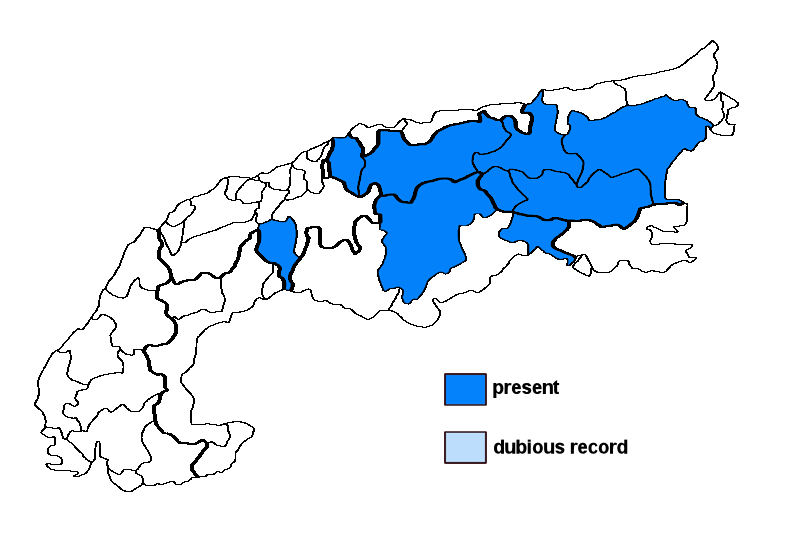Scoliciosporum intrusum (Th. Fr.) Hafellner
Syn.: Carbonea intrusa (Th. Fr.) Rambold & Triebel, Catillaria intrusa (Th. Fr.) Th. Fr., Conida intrusa (Th. Fr.) Sacc. & D. Sacc., Lecidea aphanoides Nyl., Lecidea contrusa Vain. nom.illeg., Lecidea intrusa Th. Fr., Lecidea melaphana Nyl., Lecideopsis intrusa (Th. Fr.) Zopf, Micarea intrusa (Th. Fr.) Coppins & H. Kilias
Lichenised.
Substrate:
Altitudinal range: from the montane belt (potential vegetation: deciduous forests dominated by Fagus sylvatica and closed coniferous forests with Picea abies) to the alpine belt (potential vegetation: treeless Alpine grasslands and tundras, to the lower limit of perennial snow and the equilibrium line of glaciers)
Note: a species forming insular, small, granulose thalli on and inbetween other crustose lichens, with black, glossy apothecia, early with convex discs and excluded margins, and only slightly curved, unusually mostly simple or 1-septate ascospores; on siliceous rocks in Umbilicaria cylindrica-communities; widespread in Europe from the Arctic to the boreal-montane zone, in the Alps mostly from the treeline ecotone to the lower alpine belt. The species does not belong to Scoliciosporum s.str.
Austria: Vorarlberg; Tirol; Salzburg; Kärnten; Steiermark; Switzerland: Ticino; Italy: Friuli; Trentino Alto Adige;





